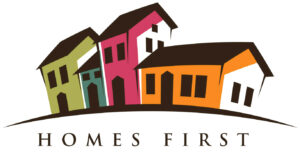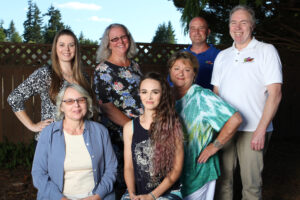 “Community members, through nonprofits, do what needs to be done to make their community a better place.”
“Community members, through nonprofits, do what needs to be done to make their community a better place.”

Trudy Soucoup joined Homes First as the Executive Director six years ago, and she quickly turned her attention to board development. Homes First owns their property and have paid professional staff, so they do not rely on their board as day-to-day volunteers. She went to work to move their board be more visionary and less hands-on.
Board Success Story
As a first step in board transformation, Trudy started onboarding new board members who would be a good fit with the direction the organization was heading. After recruiting them, she ensured that they receive thorough training. New members go through Washington Nonprofits’ Boards in Gear toolkit, and the entire board has opportunities to learn from consultants within the regional community. Trudy advises: If you are having trouble getting board members to hear you when trying to change long-standing practices, “Find other people in the community that your board respects and have them intervene.”

Homes First’s board has transformed into a healthy cohort. They have grown from holding 22 properties to 39 and are about to finish a remortgage, putting the organization in a great position for success!
Best Board Practices
Trudy is now in a position to give advice to other nonprofits having difficulty with board development and shares a few tips:
1. Make sure you “know what the resources are.” You can always contact Washington Nonprofits to find resources on boards and other nonprofit learning topics.
2. Be prepared to change the people on your board. “The reality is that you need to change your board members.” It is highly advisable to set term limits for board positions and to establish this as a permanent policy that applies to all.
3. Have a standard process for onboarding new board members. Homes First adopted this systems:
- The prospective member meets with the Executive Director and they talk about the realities of the position.
- The prospective member’s application is reviewed by the board.
- They interview with the Board Chair and the Executive Director.
- The board votes.
4. Be sure that they are “mission focused.” In order to gauge their connection to the organization’s cause, Trudy often asks if they are prepared to personally donate to the organization.
5. Create a policy committee to ensure healthy practices. “Effective policy on a governmental level is imperative for nonprofits to be effective.”
6. Include financial training in your orientation. Trudy notes that nonprofit finance is usually “the hardest part for board members.”
 Homes First staff pictured above.
Homes First staff pictured above.
Homes First is a Community-Based Housing Development Organization in Lacey, Washington. Their mission is to provide safe, healthy, affordable rental homes for those who need them most. Since 1990 they have been building communities by providing homes that are economical and sustainable for the residents. They have been a member of Washington Nonprofits since 2012.
Trudy leans on Washington Nonprofits materials as a way “to refer to best practices.” It moves the conversation away from what may fall short of best practice. Have you gone through Boards in Gear? Keep an eye on our event calendar for upcoming workshops in your area and make sure to use the online toolkit year round!